My latest trip took me to Namibia – a vast country with dramatic desert and rugged wilderness. Together with my partner Sarah, we chose the flexibility of exploring the country by car, but there are also options for accessing wilderness areas by air and scenic flights.
We arrived into the country with Ethiopian Airlines via Addis Ababa as there are no direct flights to Namibia’s capital Windhoek from the UK. Lufthansa’s ‘Discover’ airline (formerly Eurowings) is the only direct option from Europe. Alternatively, flights are available via Johannesburg in neighbouring South Africa.
After arriving at Windhoek, we collected our 4×4 Hilux twin cab – functional and comfortable with plenty of space. It provided additional ground clearance which was worthwhile, however the 4×4 aspect wasn’t really a necessity. Roads were generally good apart from occasional stretches of corrugation – which the local guides love to refer to as an ‘African massage’.
In most itineraries a night in Windhoek is necessary and this offers a wonderful opportunity to relax after international travel and review the map for the onward journey. We visited the renowned Joe’s Beerhouse (great name!) for a beer and local game meats. I’d highly recommend it for the fun atmosphere and hearty local food. As with many things in Namibia, Joe’s also offers incredible value for money.
Our extensive trip itinerary involved driving distances ranging from three to six hours and although this sounds lengthy, the scenery is ever-changing and very interesting. Time passes quickly and occasionally there are small villages/habitations where you can stop to break the journey with homemade pies, biltong and coffee usually available. Definitely worth it!
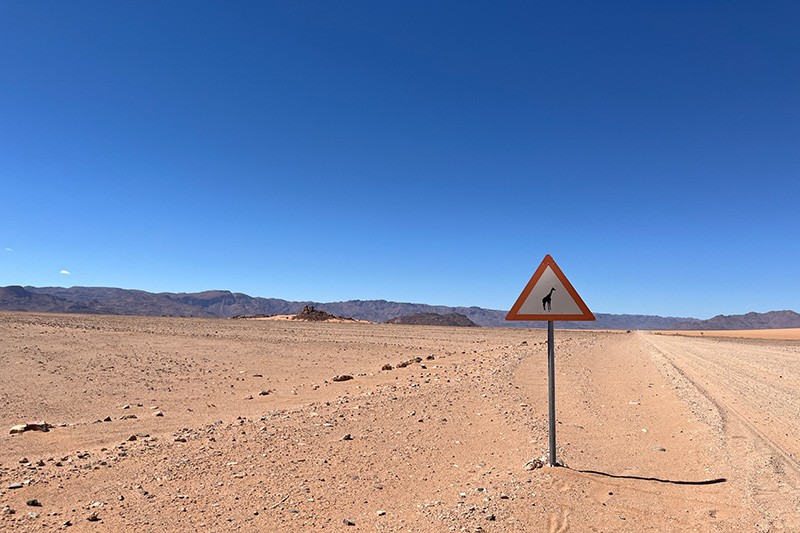
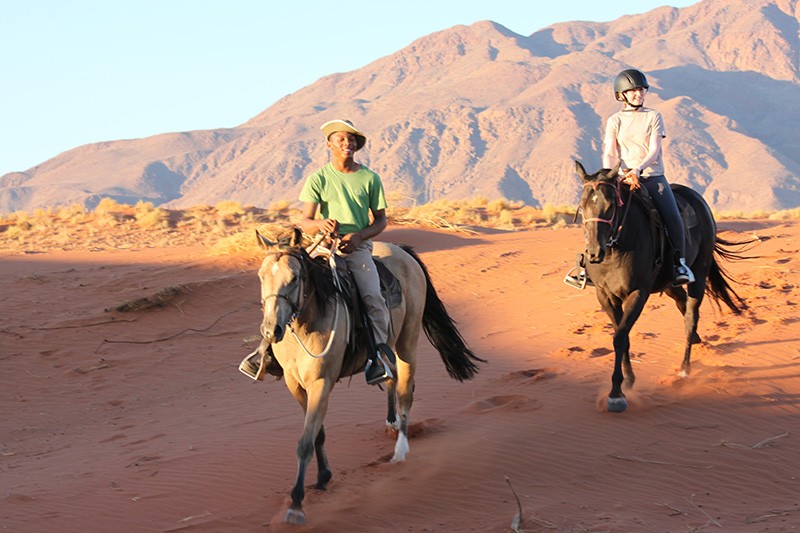
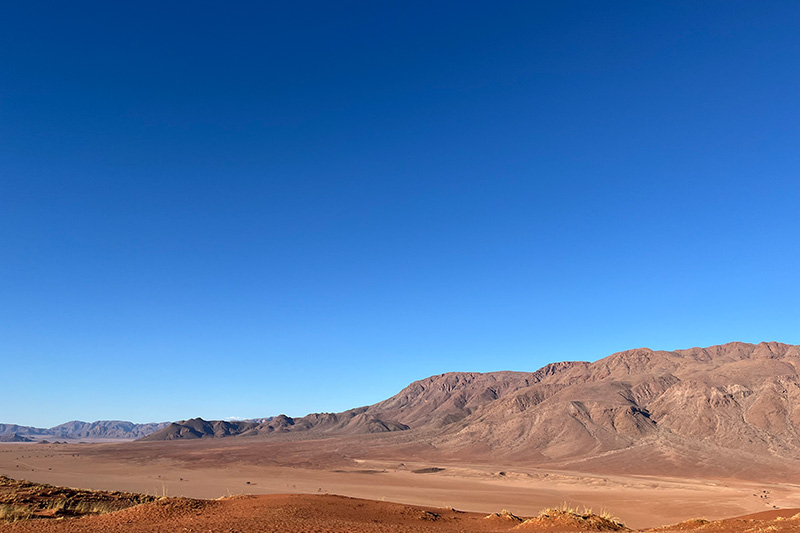
Bright red sand dunes of the Namib
Our first port of call was Wolwedans in the NamibRand Nature Reserve. On arrival, we parked our vehicle and the local guides took over.
Wolwedans is south of the better-known Namib Naukluft National Park (home to Sossusvlei and Deadvlei) and breathtakingly beautiful with bright red sand dunes and towering mountain tops. It is not a game viewing destination as such but ‘nature drives’ are offered with the opportunity to see desert-adapted species (oryx, zebra, springbok, ostrich, cape fox and bat eared fox to name a few). In addition, horse riding, e-bikes and bushman walks are possible. Sarah took the opportunity to experience an afternoon horse ride through the dunes which was memorable, while I visited some of the Wolwedans camps before rendezvousing for sundowners and the first of many impressive sunsets on the trip.
A staff village has been created at Wolwedans which is worth a visit in itself. Up to 100 staff live there complete with a school where they teach a range of skills including horticulture and hospitality to aspiring students. We met staff across Namibia further into our trip who had progressed from this initiative originally and were now in a range of roles from guides to management. A huge success story for sustainable tourism and community empowerment.
North of Wolwedans lies Namib Naukluft National Park. We spent two nights in the area while I visited the ever-growing number of lodges here and of course the iconic Sossusvlei – famous for its astonishing dune landscape.
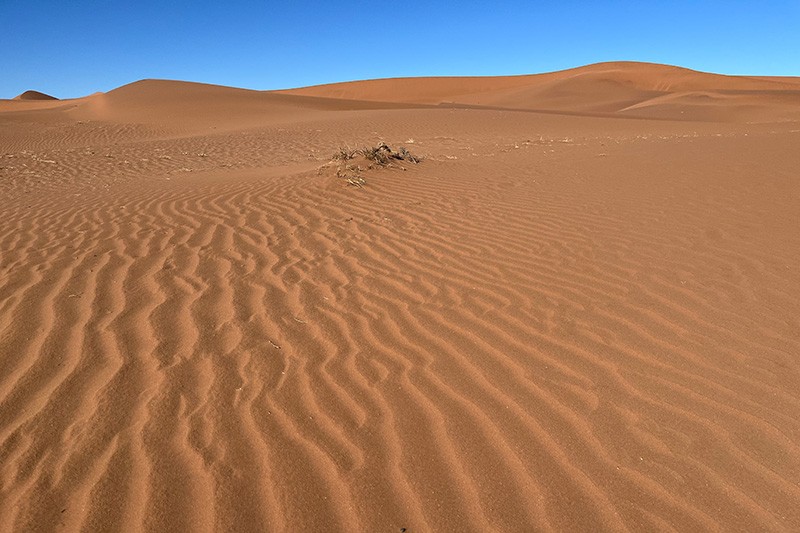
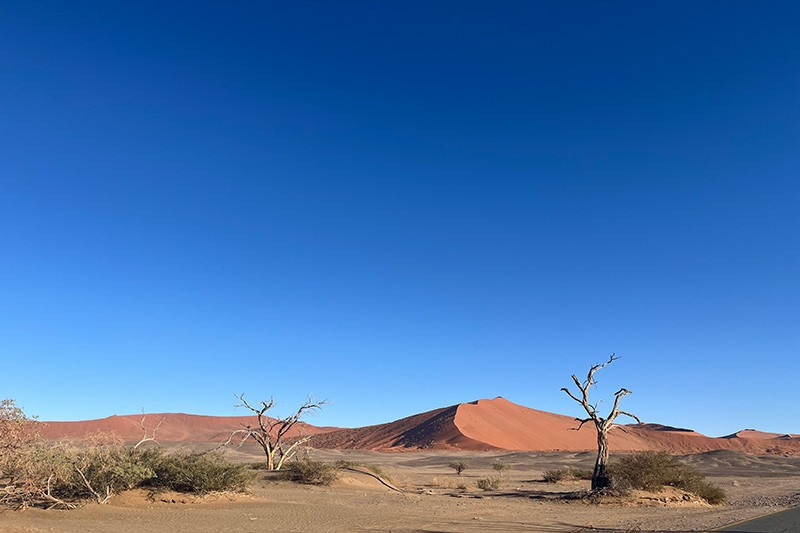
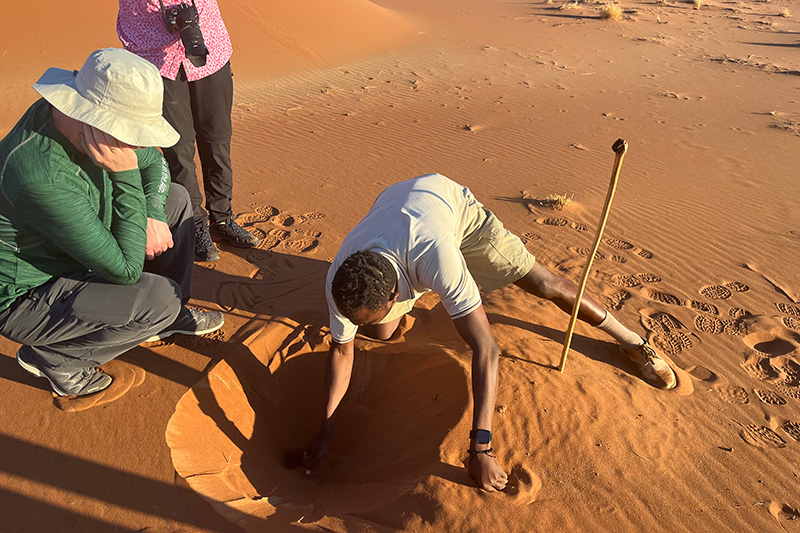
Towering Dunes of Sossusvlei
For me, there are two considerations when planning a visit to Sossusvlei – location or guiding.
The vast majority of accommodation is located outside the park and ranges from basic to five-star. Guests from most lodges therefore enter the park through the main Sesriem gate, which opens at sunrise. During busy seasons queues form to get in before the 64km drive to Sossusvlei. Staying at the accommodation inside the park (two options), meanwhile, allows earlier access to the dunes – the possibility to get there for sunrise works brilliantly for photographers looking for that killer shot! However, what you gain in proximity and timings you lose in both the quality of accommodation and guiding. That is the compromise… so it all depends on priority.
We spent one night outside the park and one inside. A lodge we often recommend outside the park is Hoodia Desert Lodge which is comfortable and friendly, but most importantly it is home to some excellent guides. Hoodia also conducts their tours slightly differently – they do still join the queues at the main gate, but they do not speed straight to Sossusvlei like everyone else. Instead, they will stop a few kilometres in and encourage guests to get out of the vehicle. The guide took us into the dunes on foot to look for desert critters (insects, endemic birds, lizards etc) and to explain the history and formation of the desert. We then continued to Deadvlei and rather than joining the other foot traffic, we climbed a quieter dune and effectively walked into Deadvlei ‘around the back’ which was great. Afterwards, we found a quiet location away from the crowds for a lazy, tasty lunch! We valued this alternative, more exclusive-feeling approach.
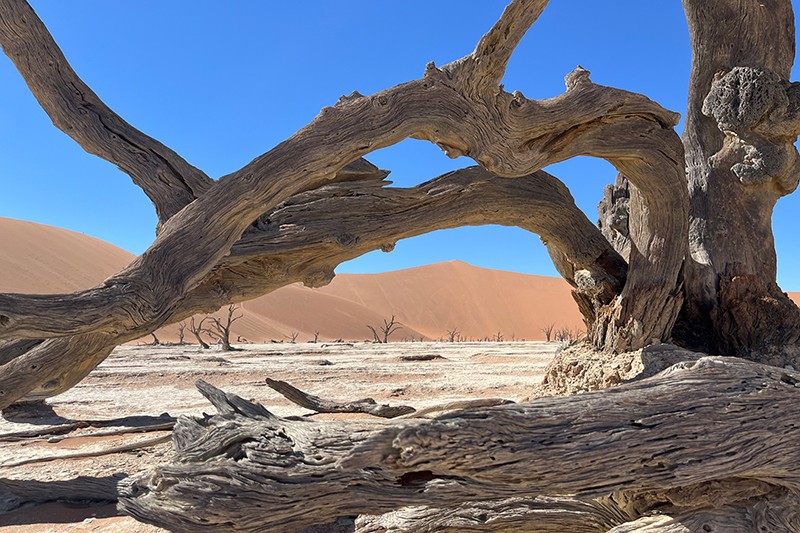
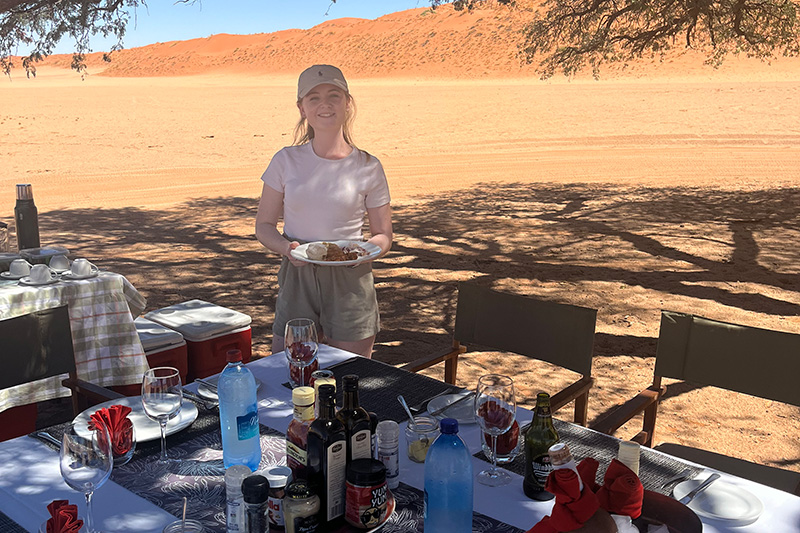
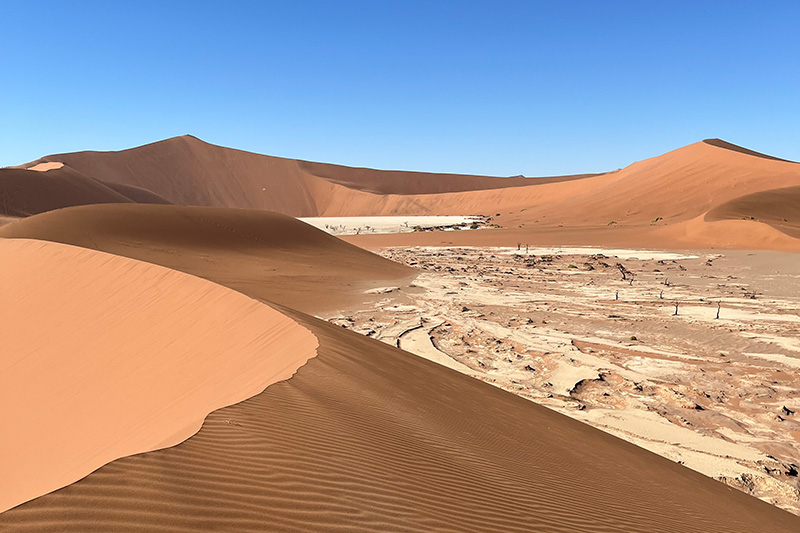
Apple Pie in the middle of the desert
From Sossusvlei we continued north to Solitaire for the famous apple pie at McGregor’s Bakery (a must if you are passing through!), before continuing to Swakopmund – a quirky and very Germanic coastal town separating the Namib Desert from the Atlantic Ocean. Swakopmund offers something for everyone: culture, history and plenty of adrenaline fuelled activities to set pulses racing too.
The town is well known for its cooler and somewhat unpredictable weather with drizzle and fog akin to the UK. Bizarrely, the inclement weather can feel like a welcome treat after the blistering heat of the desert.
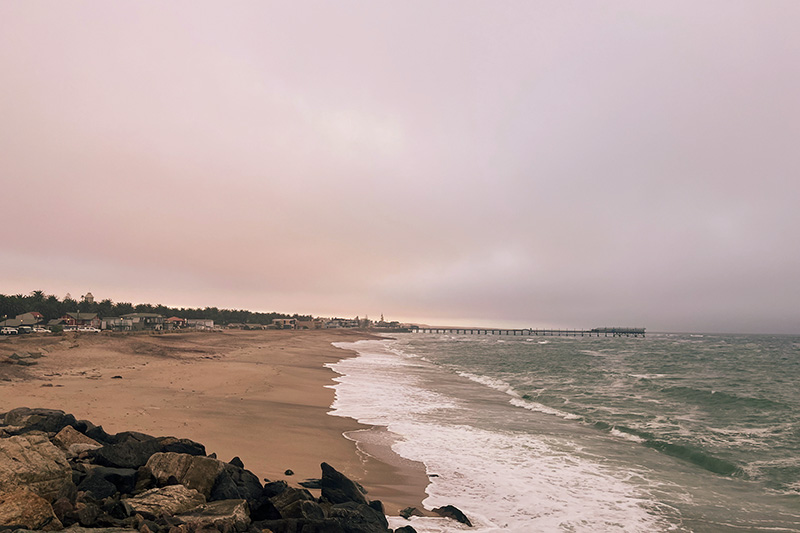
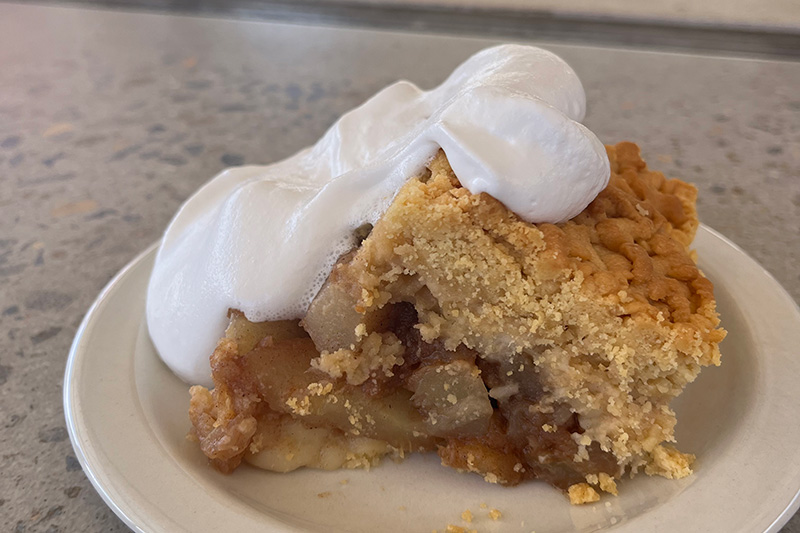
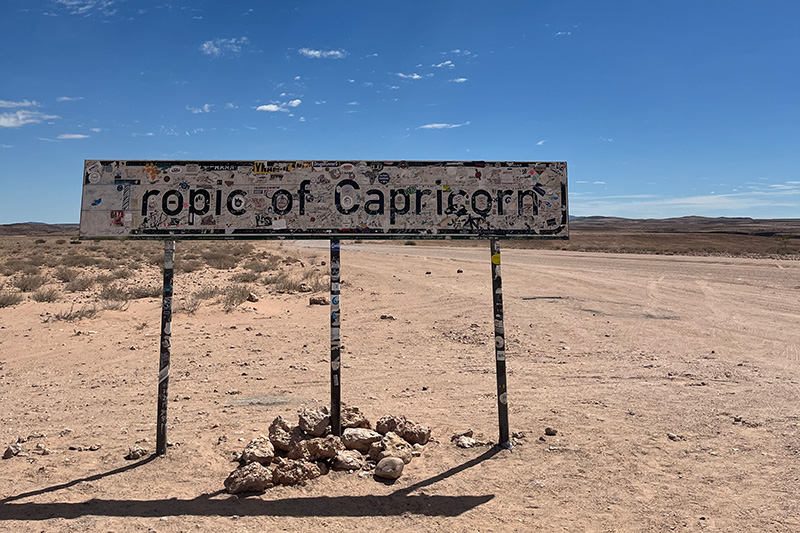
Sandwich Harbour – birds, seals and desert adapted species
For our full day on the coast we joined Bruno Nebe of Turnstone Tours for their full day 4×4 excursion to Sandwich Harbour. After breakfast, we were collected by Bruno in a TD5 Land Rover Defender and headed south through Walvis Bay and along the coast.
South of Walvis Bay are extensive salt works which, although not the prettiest, were alive with a wide variety of birds taking advantage of the saline water and algae that comes with it. Further south it gets more remote, and the beach gradually becomes narrower and narrower in the shadow of those huge Namib sand dunes that get taller and taller. It is incredible to see the desert appear to fall into the sea.
We encountered seals, brown hyena tracks and got out of the vehicle on a few occasions in search of desert adapted species such as the web-footed gecko which is almost translucent!
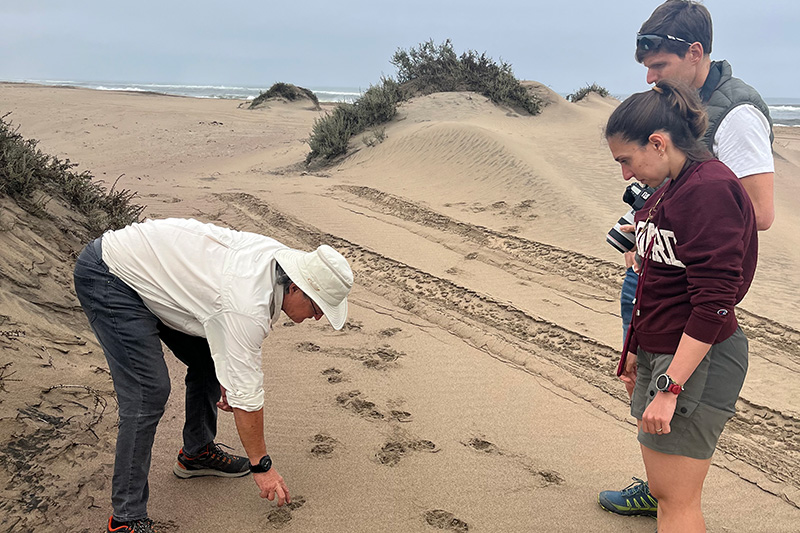

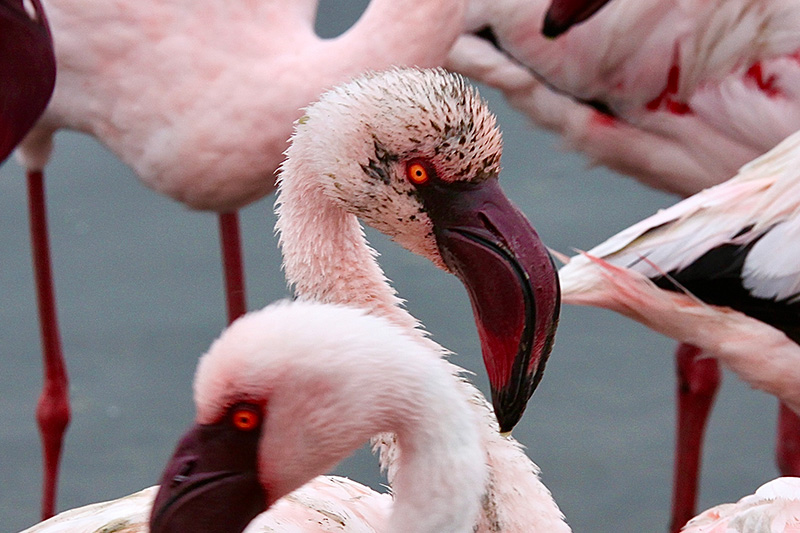
Sandwich Harbour is a natural bay and a haven for birdlife. We climbed the dunes to get an aerial view which was stunning and definitely got the heart racing and blood pumping! We enjoyed a picnic lunch on the beach before heading back through the dunes with Bruno putting the old Land Rover through its paces up and down the steep dunes.
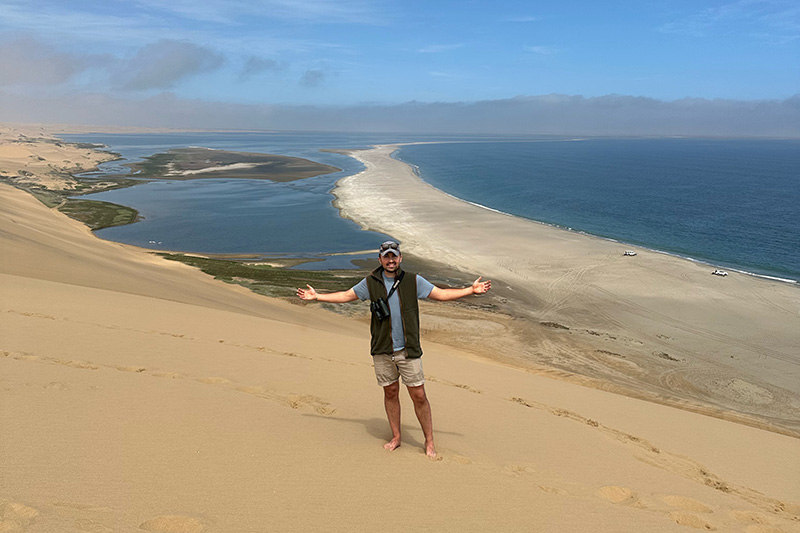
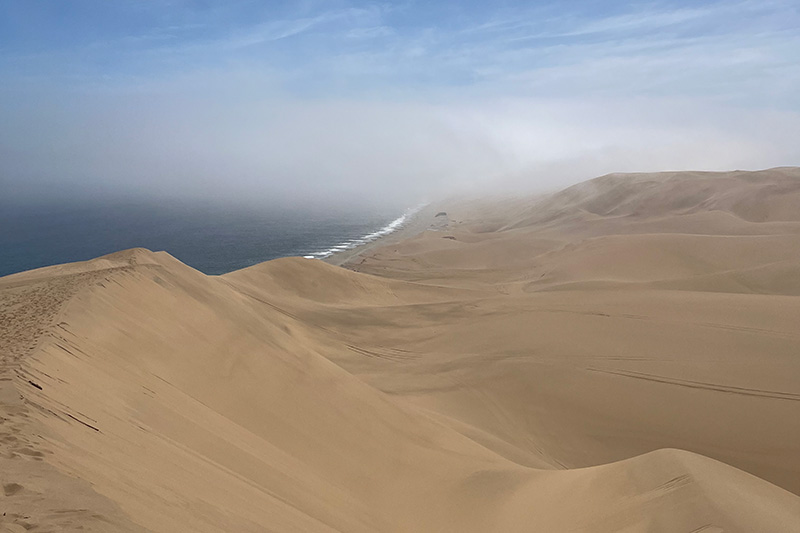
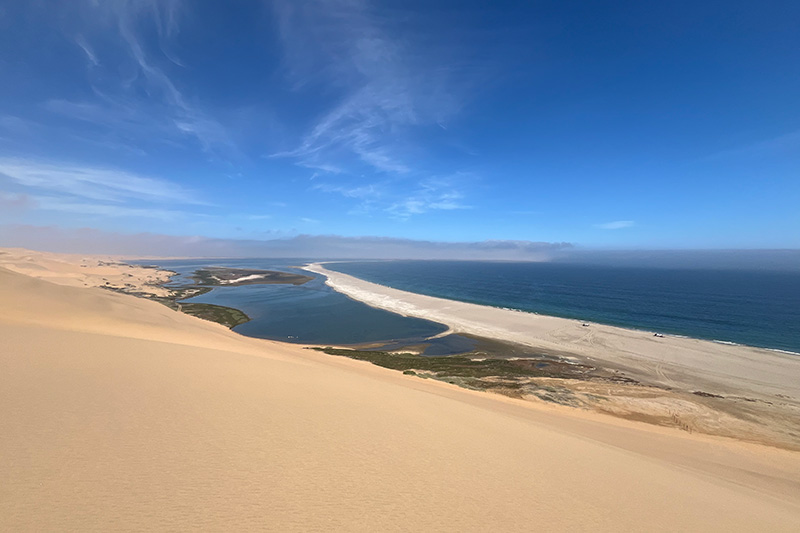
Desert elephants of Damaraland
Continuing north we entered Damaraland – a vast mountainous desert wilderness which is home to desert-adapted elephants, black rhino and potentially cats too (if you are very lucky).
The wildlife focus of southern Damaraland/Twyfelfontein area is largely the elephant which spend a lot of their time in the beautiful Huab River valley. As a result, many camps and lodges in the area offer morning drives searching for the different elephant herds. We spent the morning with the guides from Mowani Mountain Camp and found a wonderful breeding herd with a month-old calf. Seeing elephants with the mountainous desert backdrop is quite surreal and enormously different to the lush Okavango Delta in Botswana or the banks of the Zambezi River in Zambia and Zimbabwe.
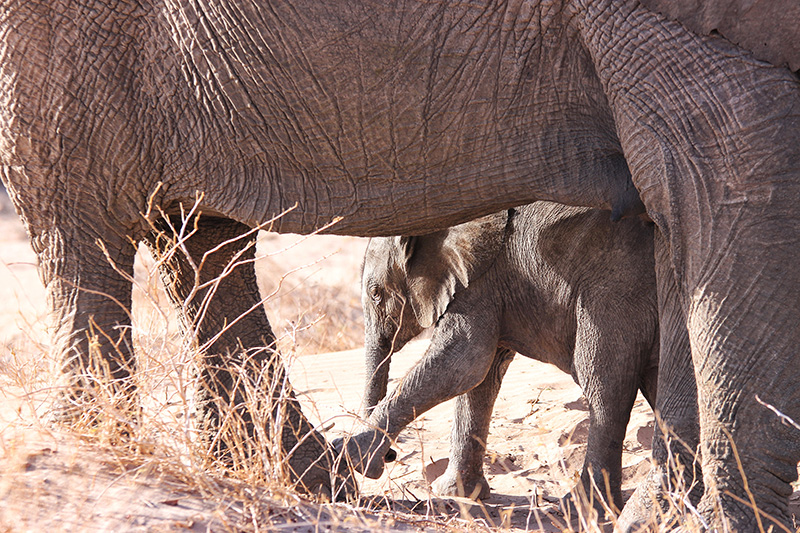
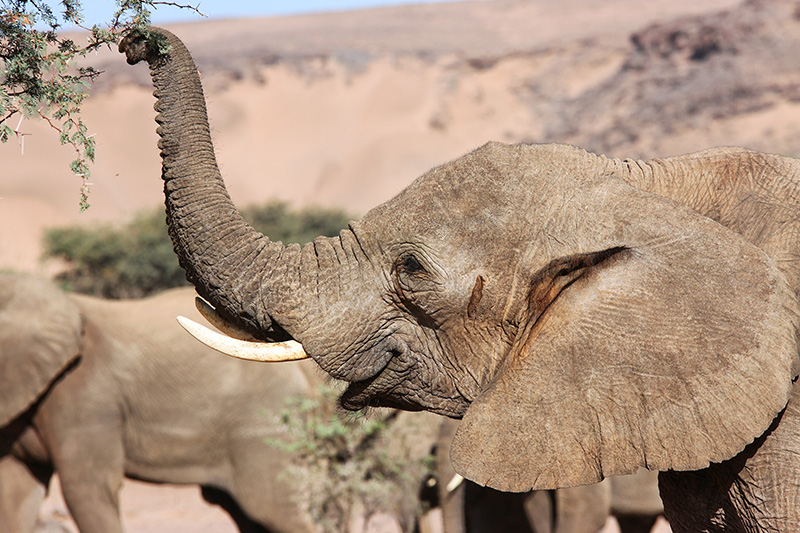
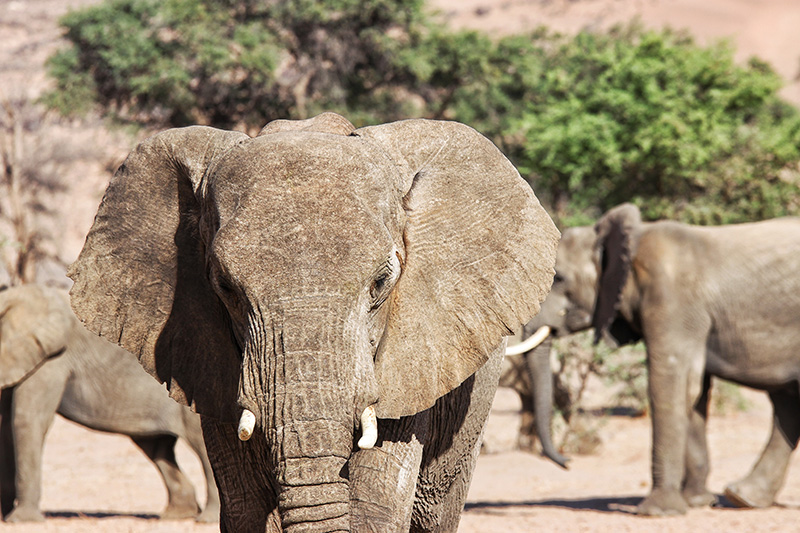
Pristine wilderness of the Kunene
In addition to the elephants, we also spent an afternoon tracking black rhino with rangers from Save The Rhino. Exploring the vast wilderness is a wonderful experience, and while seeing rhino is certainly not guaranteed, chances are generally good. You may also be offered the opportunity to track rhino on foot with specialist rangers.
It would be amiss to mention Damaraland and Twyfelfontein without referring to the rock paintings and series of natural rock formations and fossils in the area. These can all be explored during a two-night stay.
We spent two nights with Kunene Tours in the Kunene Region of northwest Namibia. We forfeited lodge luxury for a simple ‘pop up’ tent and set out into the wilderness of the Hoarasib and Hoanib River valleys for a wild camping experience.
Long drives through pristine wilderness allow you to truly grasp the scale of Namibia and how sparsely populated it is. We spent our first night in Puros on the banks of the Hoarasib River which was flowing, to our guide Caesar’s surprise. Despite perfectly blue skies and no rain for weeks, the river was flowing due to rain in the mountains within the 200km catchment area for the Hoarasib River. This demonstrates the importance of picking your camp spot carefully and not setting up in a seemingly dry riverbed. Caesar explained that every year tourist vehicles are washed away due to naïve ‘self-campers’ choosing the wrong campsite – an expensive mistake!
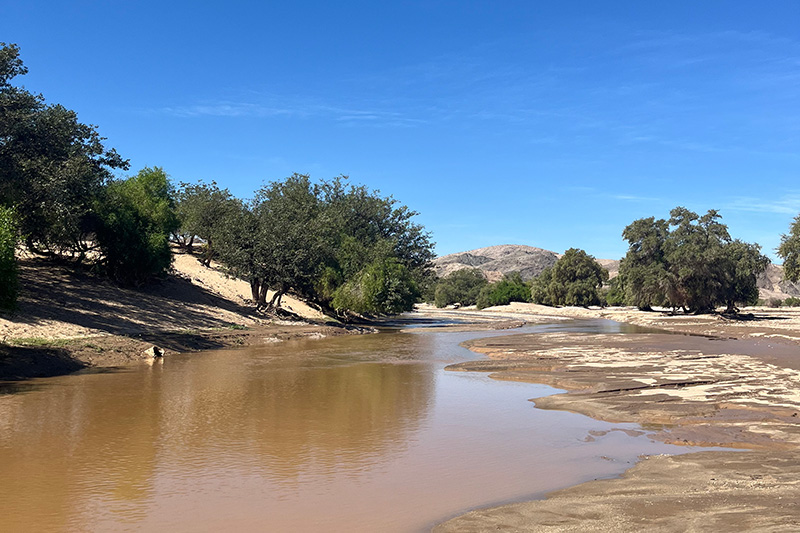
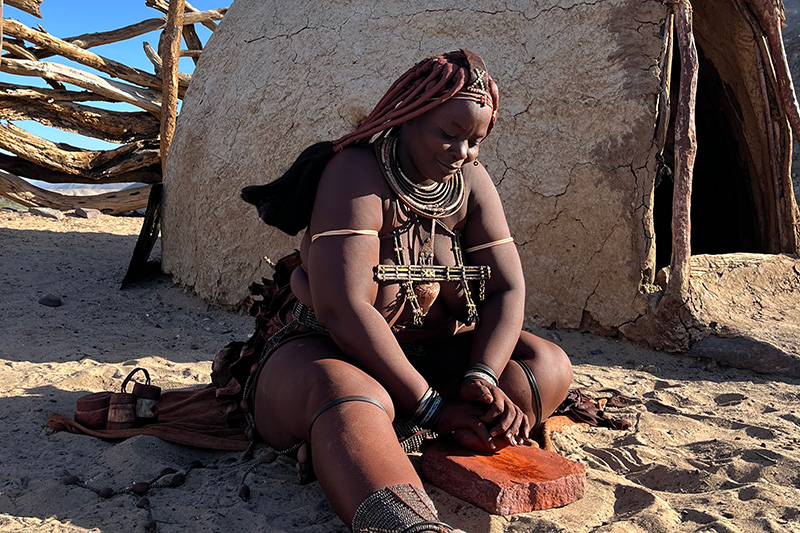
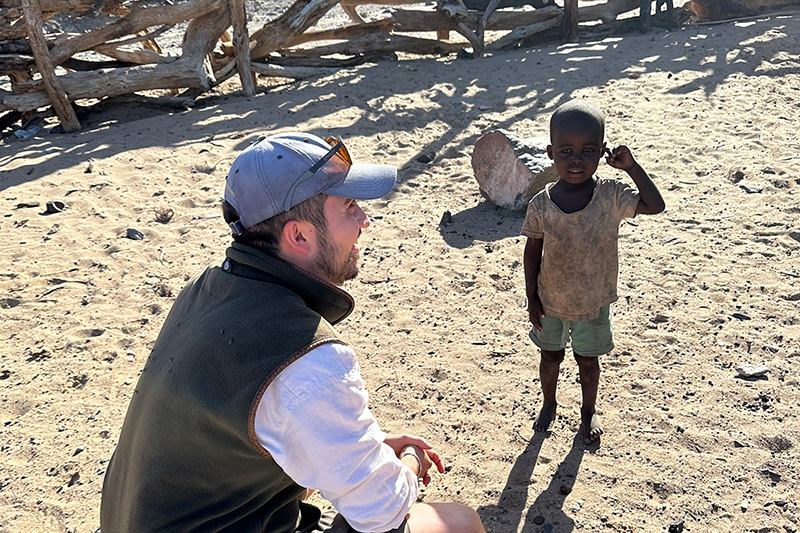
Wild camping and culture experience with the Himba
This region of Namibia is also home to the nomadic Himba people. As pastoralists in what is a very dry and arid region, they move in search of pasture for their livestock. Visiting areas such as Puros can allow you to visit a Himba village. Village visits here are not contrived experiences, but offer fascinating insight into how the Himba go about their lives, managing ordinary tasks in such an inhospitable environment. I have been fortunate to visit lots of villages across Africa and it always amazes me how happy and smiley the kids are and yet have so little.
Our second night was spent in Hoanib valley – a simply stunning area to explore. Our camping spot was completely wild with no facilities, so a make-shift shower was erected by Max, our camp manager, plus a short drop loo. There is something refreshingly exciting about having everything you need in/on one vehicle and knowing wherever you stop you can set up camp. The tents themselves are simple with two camp stretcher beds and a side table (with lamp). A dining table, campfire (on which hearty dinner is cooked) and cool box/fridges on the vehicle (so the all-important Windhoek Lager stays cold!) complete the set up. What more do you need?
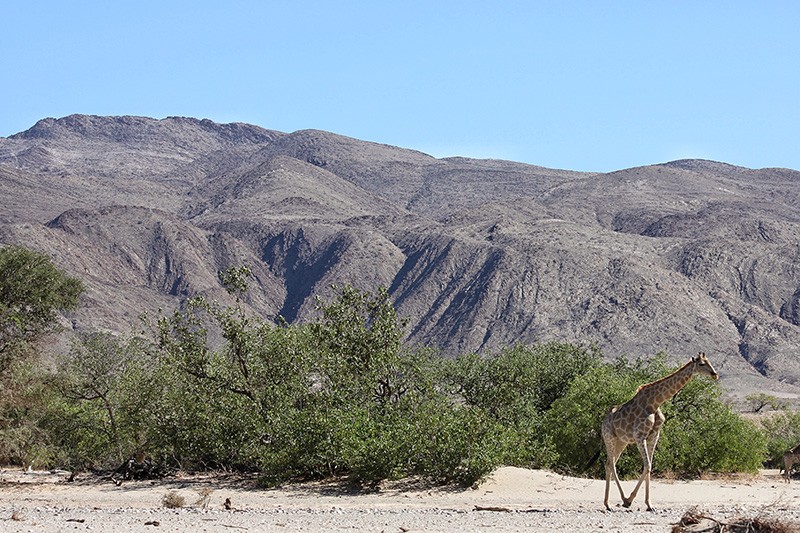
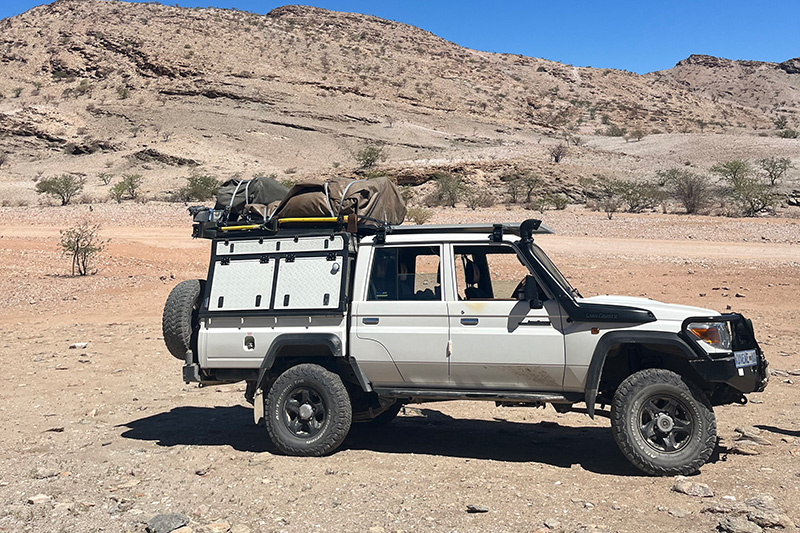

Wildlife and waterholes of Etosha National Park
There is wildlife in the area, so days are spent game driving through the river valleys. It is certainly not the premier game viewing area of Namibia and due to the remote location, you must work hard for your sightings. However, once you find what you are looking for you can almost guarantee you will be the only ones there!
The river valleys are known for their elephant populations, but desert-adapted lion are also in the area along with brown hyena and general game (giraffe, oryx, springbok, zebra etc). A visit to this area of Namibia, however, is about more than just wildlife viewing, and I would suggest this cannot be your sole reason for getting off the beaten track. Instead, it is more about experiencing true wilderness without the frills, cooking on a campfire, and interesting conversations long into the night beneath the impossibly black African night sky and a myriad of twinkling stars.
If you still want to visit these remote areas of Namibia, but wild camping is a step too far, there are luxury lodges including Wilderness Hoanib Skeleton Coast Camp and Hoanib Valley Camp. You explore similar areas, but with the benefit of life’s luxuries.
From the Kunene Region, we made our way to Etosha. It is considered Namibia’s top game viewing destination with an abundance of plains game, good lion populations and beautiful elephant herds. Etosha is dominated by the 5,000 km2 salt pan and for this reason much of the park is inaccessible. The core game viewing network is on the southern side of the pan. As with other dry areas of southern Africa, game viewing is dictated by the waterholes throughout the year, but more so in the dry season (June to October) when available water elsewhere is scarce.
The routine is therefore to head from waterhole to waterhole, seeing wildlife enroute. Etosha is extremely easy to self-drive with generally good surfaces and a simple road network (so a challenge to get lost!). You can stay in the park at the rest camps, which provide a functional base but with few frills. They do however have excellent waterholes which come alive at night with black rhino, elephant and cats too. The park accommodation also offers game drives with their guides, should you prefer not to self-drive or would like a combination of the two.

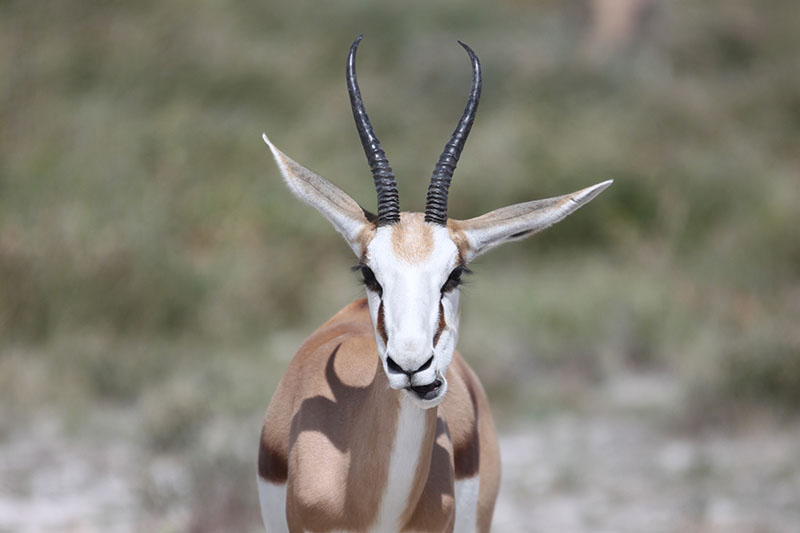
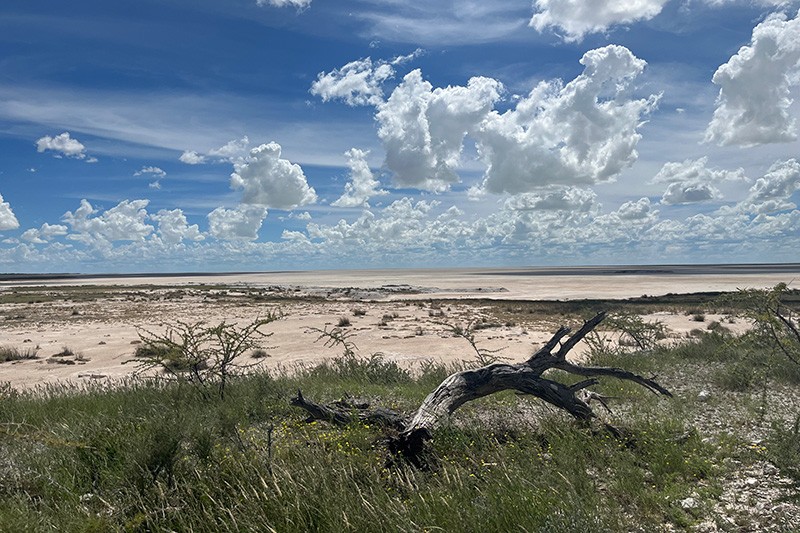
Private game reserves bordering Etosha
Bordering Etosha there are private game reserves, the most notable of which are Ongava (located by the southern Andersson gate) and Onguma (by the eastern Von Lindequist gate). Both these reserves offer a more traditional safari experience with game drives hosted by their own guides both on the reserves and in the park. Accommodation is also more luxurious. We often find that a combination of self-driving and private reserves works well in Etosha. The freedom to explore the waterholes at your own pace is liberating, but having the expert knowledge of the guides can also be enlightening.
A highlight for Sarah and I was spending time at a the Olifantsbad waterhole. We sat and waited while other vehicles followed two bull elephants wandering into the distance. After 15 minutes or so, a breeding herd of elephants made their way through the mopane woodland to the waterhole with the excited youngsters speeding up to a light jog as they got closer to the water – delighted to quench their thirst! Simply sitting, watching these elephants drink and interact was incredibly special.
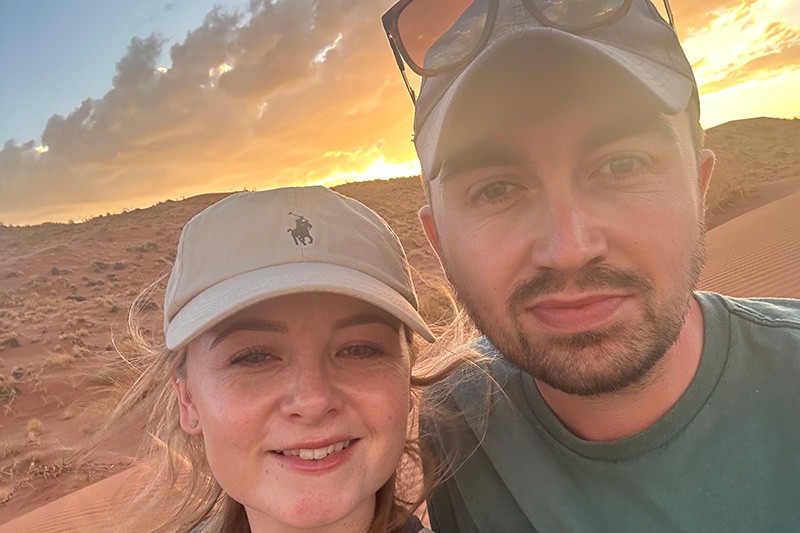
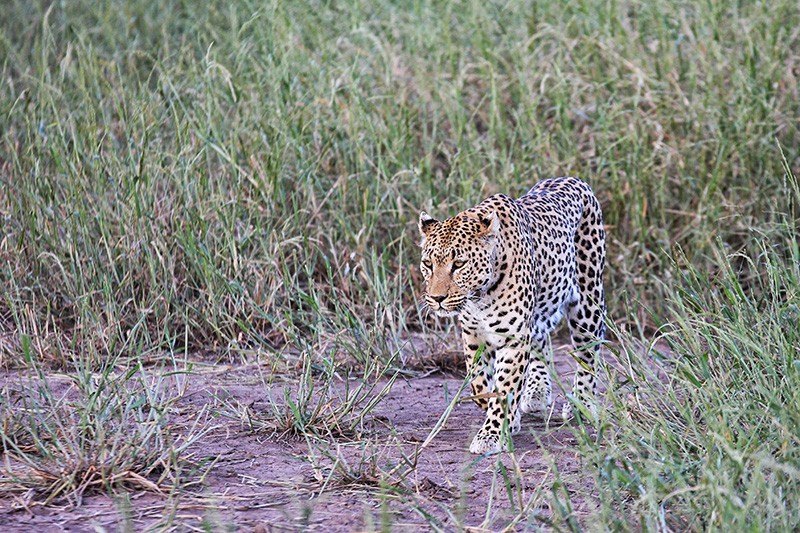
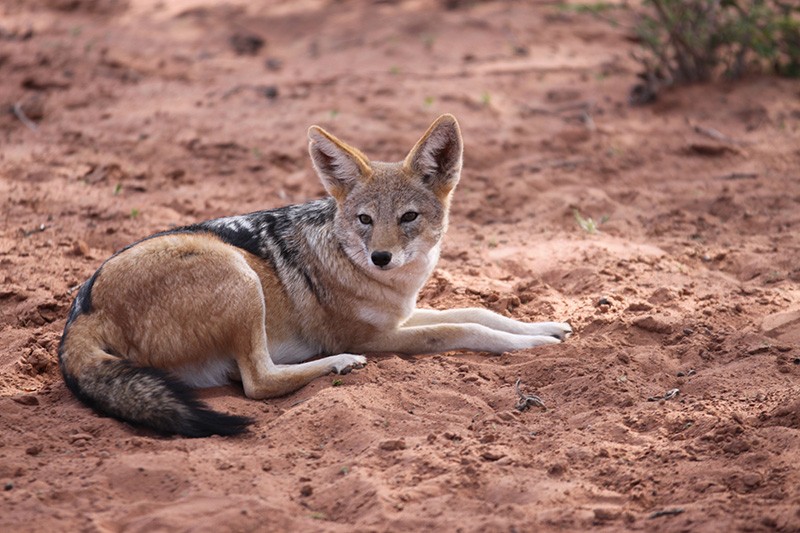
Okonjima home to the AfriCat foundation
The final stop for us was the Okonjima Nature Reserve, conveniently situated halfway between Etosha and Windhoek along the main B1 road. Okonjima is home to the AfriCat foundation which was established in the early 1990s with the objective to ease human-wildlife conflict and conserve big cats across Namibia. Since then, the organisation has grown and with the support of tourism they have rehabilitated hundreds of cats from across the country, releasing those they can. There are cats on the reserve (most notably leopard) which can be tracked through telemetry. There is also the opportunity to learn more about the ongoing research of these cats. In addition, there are opportunities to track pangolin, visit the AfriCat foundation and see other cats being rehabilitated.
Namibia is a stunningly beautiful country. It is a land of harsh yet mesmerizingly magnificent landscapes of arid desert; mind boggling sand dunes; wild coastline; unspoilt wilderness and wildlife that has adapted to survive in these challenging conditions. Roads are long and straight; they seem to disappear into infinity. The sky seems overwhelmingly big but everywhere you look there is a photo waiting to be taken. It is also completely different to other traditional safari destinations across Africa.
The accommodation choice is wide and plentiful and there is a diverse range of things to see and do – history, culture, photography, horse riding, high adrenaline activities, wildlife and incredible landscapes. And it represents superb value for money due largely to the strength of the pound against the South African Rand.
During Joe (and Sarah’s) time in Namibia, they stayed at: The Olive Exclusive, Wolwedans Dune Camp, Hoodia Desert Lodge, Dead Valley Lodge, Villa Margherita, Swakopmund Sands, Mowani Mountain Camp, Wilderness Damaraland Camp, Kunene Tours (wild camping), Ongava Lodge, Onguma Tented Camp and Okonjima Plains Camp.
They also visited: Olive Grove, Hotel Heinitzburg, The Weinberg, Galton House, Wolwedans Desert Lodge, Kwessi Dunes, &Beyond Sossusvlei Desert Lodge, Little Kulala, Namib Outpost, Camp Sossus, Sossus Dune Lodge, Desert Grace, Cornerstone Guesthouse, Hansa Hotel, Brigadoon Guesthouse, The Strand, Ozondjou Trails, Onduli Ridge, Twyfelfontein Country Lodge, Camp Kipwe, Doro Nawas, Khowarib Lodge, Wilderness Hoanib Skeleton Coast Camp, Hoanib Valley Camp, Little Ongava, Anderssons at Ongava, Etosha Oberland, Okaukuejo Rest Camp, Onguma The Fort, Onguma Bush Camp, Onguma Forest Camp, Mushara Lodge, Mushara Outpost, Mushara Bushcamp and Okonjima Luxury Bush Camp




